8.4 Crypto Tracking: How to Track Your Favorite Coins & Tokens?
Stop overpaying - start transferring money with Ogvio. Sign up, invite friends & grab Rewards now! 🎁
In this section, we’re going to learn how to track new crypto coins, as well as your favorite tokens!
It’s an essential skill that’s second nature to every serious trader. Knowing how volatile the crypto market is, being always on time with the latest developments and updates is of crucial importance. And, as you’ll soon see, this skill has layers of complexity, and if you want to become a real crypto native, you better read this section till the end!
The question about what metrics should be followed is an open one. Some would suggest one answer, while others would vouch for the other theories. Yet, the best approach is to be aware of all of them, and not ignore those factors that may seem complicated, yet of essential importance.
In this section, I’m going to present to you what are the best platforms and tools to optimize your crypto-tracking skills. There are plenty of options to choose from, but I’ll concentrate on the most accessible, reliable, and useful ones.
Let’s get to that!

Video Explainer
Video Explainer: Crypto Tracking: How to Track Your Favorite Coins & Tokens?
Reading is not your thing? Watch the "Crypto Tracking: How to Track Your Favorite Coins & Tokens?" video explainer
How to Track Cryptocurrencies? (3 BEST Tracking Platforms Revealed)

Coin-Tracking Websites
The process of tracking cryptocurrencies refers to consistent monitoring of various metrics of a particular coin. Among such metrics are its price, total crypto market cap, circulating supply, and others.
Staying up to date with all of this relevant data allows traders to make informed decisions about when it’s the right time to make a move. To buy, sell, hold, or simply ignore the coin.

Once users learn how to track crypto in general, the question of ‘how to track new crypto coins’ is no longer a difficult task. The same rules apply; therefore, a well-versed crypto trader will always be ahead of the game, since they’ll know when to spot a promising new crypto before other traders do.
The first step is to find, select, and get familiar with a trustworthy crypto-tracking platform. The available selection is rich and wide, but let’s concentrate on popular, free, and well-trusted crypto-tracking websites.
Among the most prominent and reliable names in the industry, such platforms as BitDegree, CoinMarketCap, or CoinGecko should be mentioned.
Let’s take a look at BitDegree.org, which presents itself as a Web3 Learning Hub, and, essentially, is a universally applicable crypto-tracking platform.
Upon entering the website, you can immediately see that Bitdegree presents essential data regarding over 21,000 different cryptocurrencies, and almost 1,700 crypto exchanges. It’s safe to say that, whatever you’re interested in, you'll most likely find it within the hub, and you’ll be able to begin tracking the crypto of your interest right there, on this platform.
So, the first step is to get familiar with such a platform, and learn where to find all the necessary real-time data, coin metrics, and other vital indexes.
Crypto Analysis Indicators
In order to know how to track new crypto coins, it’s also unavoidable to rely on crypto analysis indicators. Let’s define them real quick.
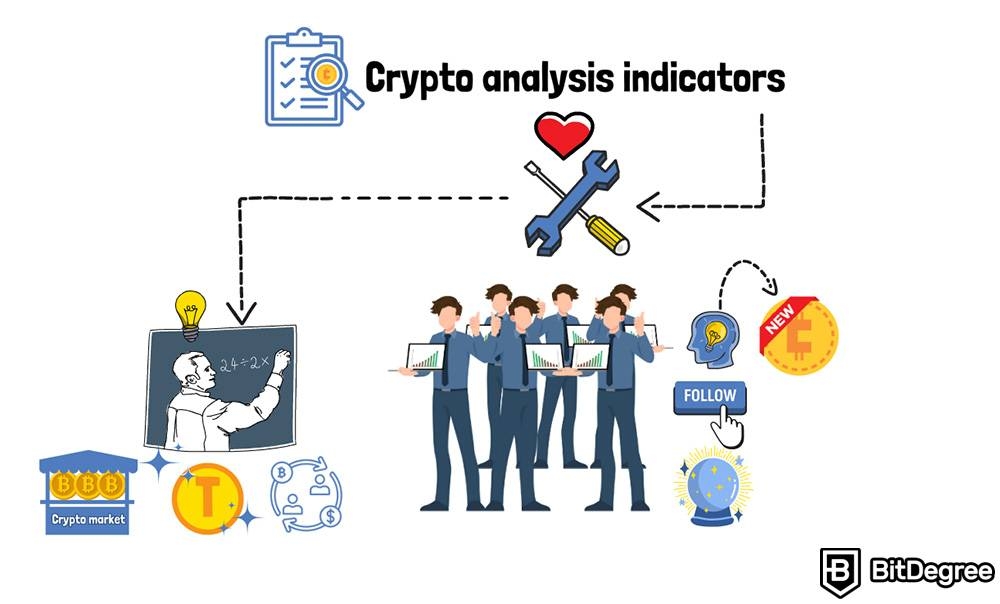
Crypto analysis indicators are convenient tools that help crypto traders and investors understand, follow, and, in successful cases, predict the right time to make a financial decision concerning a new coin.
In the majority of cases, these tools are mathematical formulas of sorts, that allow analysts to understand in what state the cryptocurrency market, a particular crypto asset, trading activity and other elements are.
It’s simple. A pro chef knows their recipes and ingredients. A pro tracker knows their analysis indicators. Though, one thing is to understand them, while another is to understand what role they play in the crypto tracking process and which ones are the ones to keep your eyes on. Besides that, you must be able to read them not only from the tokenomics angle, but from a trader’s perspective as well.
So, what kind of crypto analysis indicators there are?
Market Capitalization
First, among the most important ones, you’ll find “market capitalization”, or, more commonly, “market cap.” So, what is market cap in crypto, and how does market cap affect crypto price?
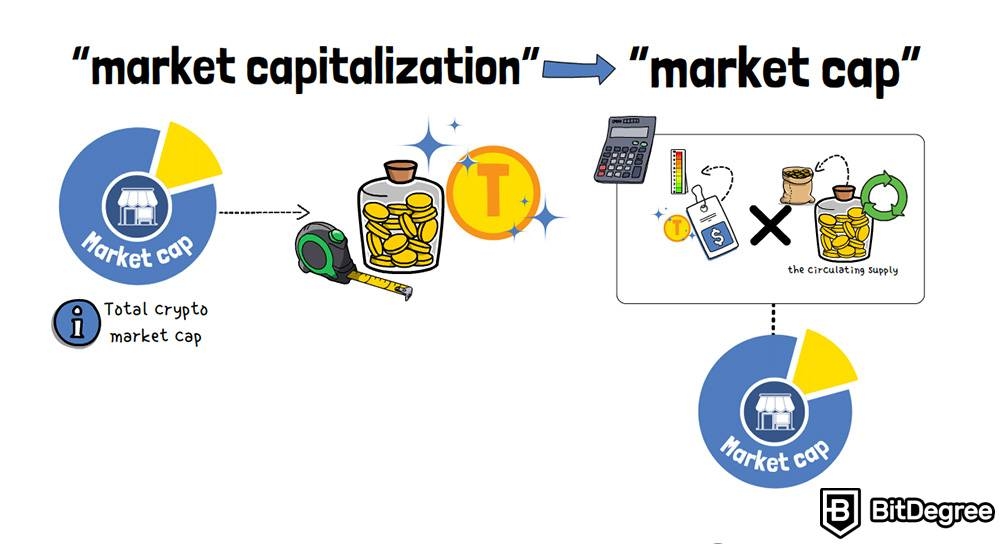
Market cap is used to measure the total value of a cryptocurrency. Therefore, it can be referred to as the total crypto market cap as well. It is calculated by multiplying the current market price of a crypto asset by the total number of coins in circulation - the circulating supply. The more coins in circulation, and the higher their price, the bigger its market cap gets.
Then, there’s also the fully-diluted market cap in crypto, as well. This is calculated by taking the current price of the asset, and multiplying it by all of the existing coins, including those that are currently not in circulation. The two metrics are different, but I’m getting a bit too technical here - let’s get back to the point.
Thanks to the total crypto market cap indicator, traders can easily assess the overall value and size of a crypto project. Just by taking a look at the top cryptocurrencies, you can immediately tell that the most widely adopted coins have huge market caps, while the lesser-known ones have significantly lower numbers associated with them. It’s a quick and convenient way of indicating whether a coin is a big player in the crypto game.
Circulating Supply, Total Supply, and Max Supply
Moving on, let’s take a look at “Circulating Supply.” It refers to the number of coins of a particular cryptocurrency that are currently available and actively traded in the market. The keyword here is “currently.” This means that if some tokens were burned, destroyed, or put in cold wallets, they are not included in the “circulating supply” metric.
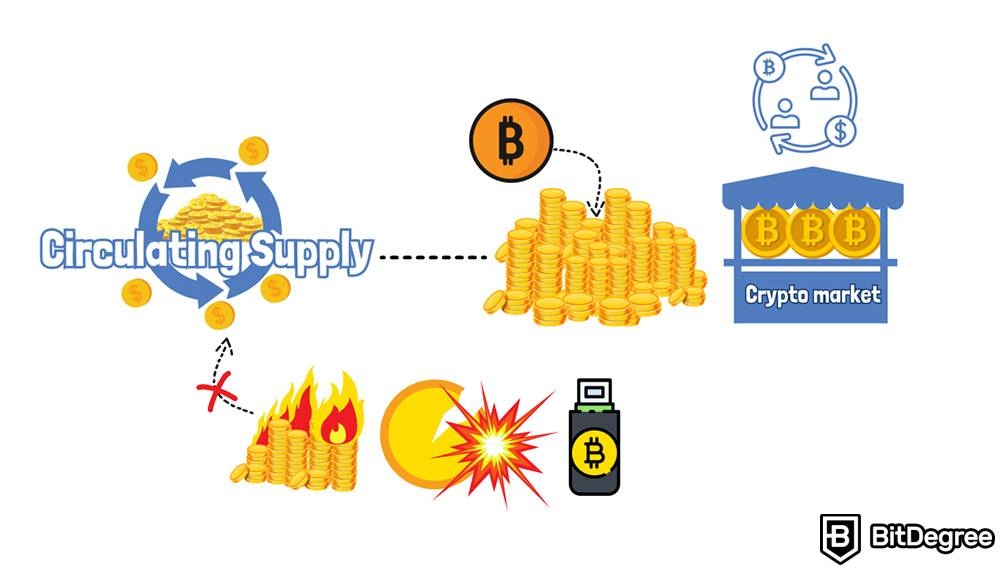
This indicator is useful to traders because it allows them to measure the potential growth of a particular coin. They can assess whether many more coins are about to be released into circulation, which would potentially affect the crypto asset’s value. This could be an issue both for cryptos with the lowest supply, as well as those that have large supply caps, too.
Now, if you were to include all of the coins of a particular cryptocurrency, even those that are not currently in circulation, you would get something that’s called “Total Supply.”
As I’ve mentioned earlier, this refers to the total number of coins or tokens that have been created for a particular cryptocurrency. Many coins are being mined on a daily basis, which means that with every passing day, the total supply increases. Many coins have a limit on how many of them can be created. So, when you take into account the total amount of coins that will eventually be created, you get yet another indicator - “Max Supply.”
Here’s a practical illustration. Bitcoin is a well-known example of a crypto asset with a limited max supply of 21 million coins. This means that once the last Bitcoin is mined, not a single additional Bitcoin will ever be added to the coin’s circulation. This was carefully implemented into the Bitcoin architecture with the idea that such limitations would help maintain the currency’s scarcity and help Bitcoin avoid inflation over time.
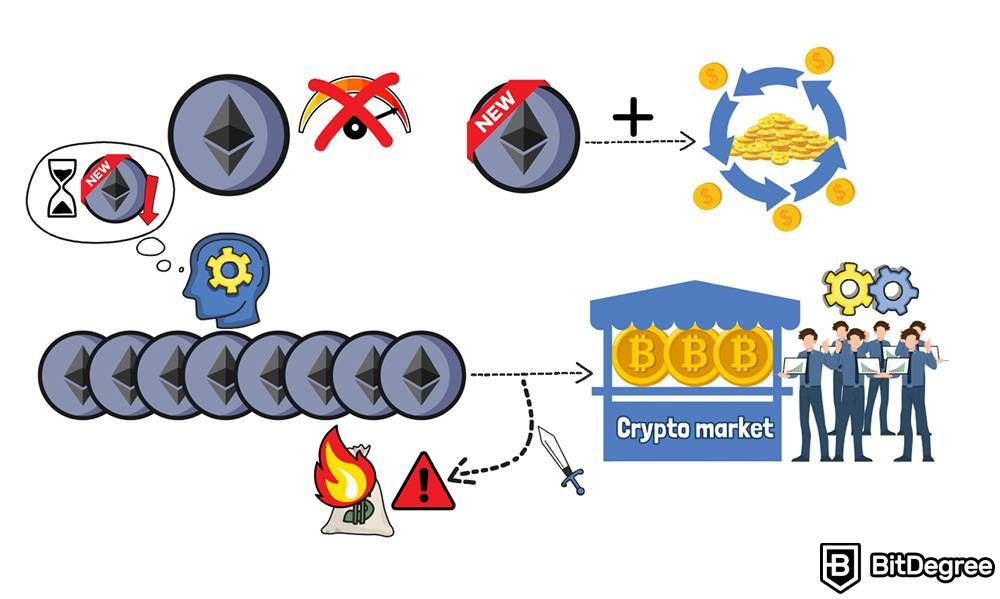
But then, on the other hand, we’ve got Ethereum, which has no fixed maximum supply limit. This means that newly-minted Ethereum will be forever added to the circulation. The logic behind such a structure seeks to ensure a constant flow of the cryptocurrency into the market, thus keeping the market participants busy, and motivated.
Obviously, this creates the risk of inflation. To combat it, the minds behind Ethereum have made sure that the issuance of new Ethereum coins would decrease over time.
Investors can try and predict what kind of effect on the coin’s value this will have in the long run, and can choose whether coins with a limited max supply, or without it, are a better call.
ATH & ATL
Now, let’s talk about the “ATH” and “ATL”, or “All-Time High” and “All-Time Low.” Thankfully, the names here are pretty self-explanatory, since they refer to the all-time high and all-time low prices of a particular cryptocurrency.

Again, let’s look at Bitcoin to illustrate it. On April 14, 2021, Bitcoin reached its All-Time High of $64,863.10. Bitcoin has yet to reach such heights again; therefore, this particular price is known as the Bitcoin ATH. But, it might change in the future.
An all-time low is the exact opposite. And when was Bitcoin the cheapest? Of course, just after its inception, back in 2009. When it was just created, Bitcoin was being traded for $0.01. Its value has never dropped lower; therefore, Bitcoin’s all-time low is $0.01. Every cryptocurrency has its own ATH and ATL.
By taking a single glance at a particular coin’s ATH & ATL, and comparing them to its current price, even the very crypto beginners immediately tell in what state the currency is. And, by doing so, they can easily understand whether a coin has gone downhill over time, or increased in value.
TVL
There are many abbreviations in the land of crypto, and TVL is yet another of significant importance. TVL stands for "Total Value Locked," and it’s used to measure the total value of assets that are currently locked in DeFi protocols.
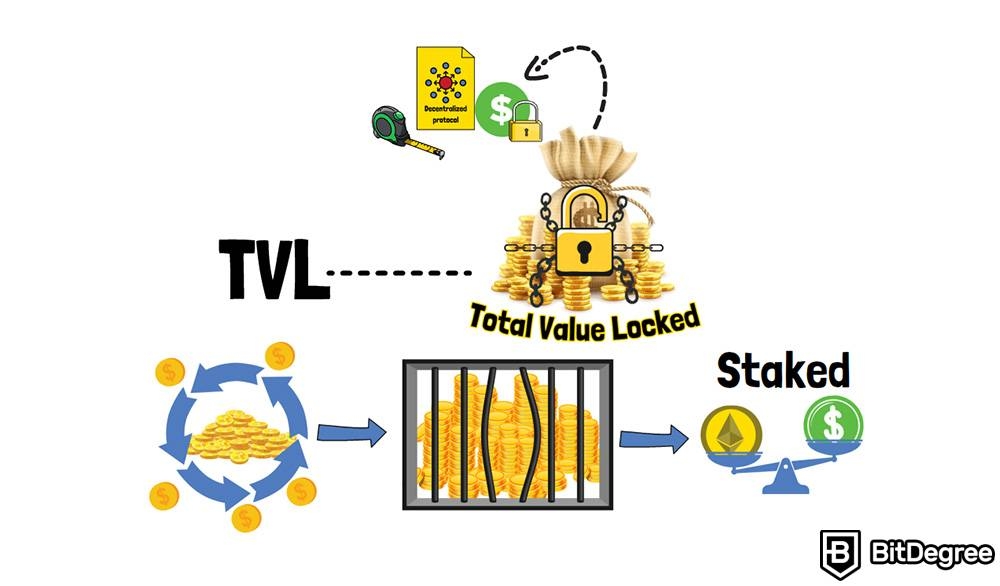
This translates to various amounts of crypto being taken away from circulation by being, for example, staked.
Staking asks for another section of its own, but, the good news is that there is one! So be sure to check it out if you feel like refreshing your knowledge wouldn’t hurt!
Okay, so back to TVL. As the name of the indicator suggests, it talks about money that’s locked away, and is not in circulation.
A higher TVL indicates that traders are prone to trusting various DeFi protocols and locking assets into them. A lower TVL indicates that particular DeFi projects fail to boost confidence, and attract users to their platform.
Coins’ Smart Contracts
So, the aforementioned crypto analysis indicators are fundamental to every informed financial decision. Wherever something important happens in a life of a cryptocurrency, those numbers will immediately reflect how grave these changes were. But, there’s more.
In order to gain insight into a particular cryptocurrency, traders also inspect the smart contract upon which this coin is built.
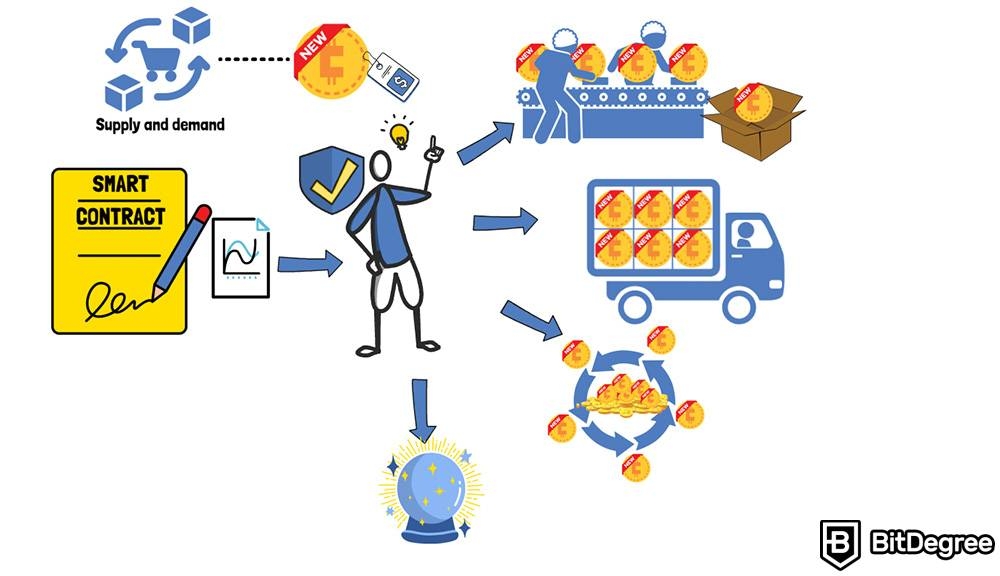
If you feel like your knowledge about smart contracts needs some revisiting, be sure to check a separate section dedicated to this topic in my Crypto 101 Handbook.
However, the main thing you have to note is that smart contracts are built to be transparent. This means that once their code is written, and deployed on the blockchain - it’s there to stay, so, no one’s gonna alter or tamper with it. Access to it allows traders to make more informed guesses about how the coin may perform in the near future. This is one of the tricks of knowing how to track new crypto coins.
Here’s a practical example. Smart contract data allows traders to see and evaluate the rate at which new coins are created, how fast they are distributed, what their circulation looks like now, and what it will look like in the future. Taking into account how supply and demand crypto laws affect coins’ prices, this info could become a life-saver for an informed trader.
Okay, so… Where can you access such information?
Blockchain Explorers
The good news is that each network has something known as a ‘blockchain explorer.’ It’s where you want to go if you’re interested in the nitty-gritty of these coins, of what’s actually going on under the hood.
People use blockchain explorers to find such data as transaction details & addresses, and to see what the overall network’s health looks like.

Consider Blockchain.com. As the domain name suggests, it’s about the Blockchain, the one that started it all. It’s a leading blockchain explorer for the Bitcoin network. Users who are eager to learn real-time data about Bitcoin go here. All the essential info, such as network activity, hash rate, price chart, and everything else, is right there.
Another example is Etherscan. As the name suggests, this one’s built for Ethereum. But, Ethereum is a blockchain, which allows other projects to be built upon it. Therefore, many new crypto coins appear on the Ethereum network. Using Etherscan allows you to not only track Ethereum blockchain-related data, but also that of the projects built on this network, as well.
Once you've found the token you want to track, simply paste its address into Etherscan to access more details, such as the number of on-chain token holders. This will provide you with insights into how the coin’s actually doing.
As you can see, blockchain explorers can be of critical importance when it comes to knowing how to track new crypto coins, and observe their tokenomics, and how their supply chain in crypto works, in general. Just remember - different blockchains have different explorers that are used to track their activities.
Wrapping Up
So, this brings us to the end of the section. I’ve presented to you the basic, and the more advanced ways of how to track new crypto coins, what indexes and indicators to follow, and how important they are. Knowing this will truly step up your crypto-tracking skills, and, hopefully, allow you to continue growing as an informed trader.










